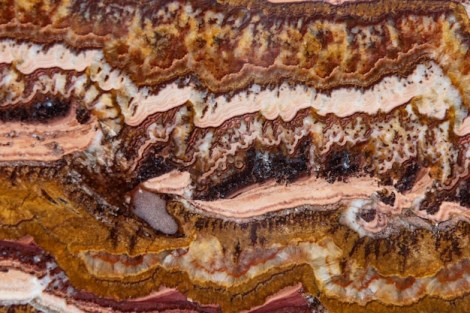Fascinating Facts about Sedimentary Rocks

Sedimentary rocks are formed from the accumulation and consolidation of sediments over time.
Sedimentary rocks make up about 75% of the Earth’s surface.
The layers in sedimentary rocks are called strata.
Fossils are often found in sedimentary rocks, providing valuable information about past life forms.
Sedimentary rocks can be classified into three main categories: clastic, chemical, and organic.
Clastic sedimentary rocks are formed from the fragments of other rocks.
Chemical sedimentary rocks form when minerals dissolved in water crystallize and precipitate out.
Organic sedimentary rocks are composed of plant and animal remains.
Sandstone is a common type of clastic sedimentary rock.
Limestone is a well-known example of a chemical sedimentary rock.
Coal is an organic sedimentary rock formed from dead plants.
Sedimentary rocks often contain valuable resources such as coal, oil, and natural gas.
Sedimentary rocks can provide clues about past climates and environmental conditions.
The Grand Canyon in the United States is a spectacular example of sedimentary rock layers.
Sedimentary rocks can be found on every continent.
Sedimentary rocks are important for understanding Earth’s history.
The study of sedimentary rocks is called sedimentology.
Sedimentary rocks can be soft and easily eroded or hard and resistant to weathering.
Shale is a type of sedimentary rock that is characterized by its ability to split into thin layers.
Fascinating Facts about Sedimentary Rocks part 2
Sand dunes are often formed by the accumulation of sand-sized sedimentary grains.
The Niagara Falls in North America is an example of a famous waterfall formed by erosion of sedimentary rocks.
Sedimentary rocks can contain fossils of dinosaurs, ancient plants, and marine creatures.
The famous White Cliffs of Dover in England are made of chalk, a type of sedimentary rock.
Sedimentary rocks are often used as building materials in construction.
The layers in sedimentary rocks can provide valuable information about Earth’s past tectonic activity.
Sedimentary rocks may contain layers of volcanic ash, indicating past volcanic eruptions.
Sedimentary rocks can form caves and other interesting geological formations.
Over time, sedimentary rocks can undergo metamorphism and become metamorphic rocks.
Sedimentary rocks can form in a variety of environments including rivers, lakes, oceans, and deserts.
The color of sedimentary rocks can vary greatly depending on their mineral composition.
Sedimentary rocks can be used to determine the age of the Earth’s crust.
Sedimentary rocks can act as natural filters, purifying groundwater.
Sedimentary rocks can reveal information about ancient ecosystems and the evolution of life on Earth.
The layers in sedimentary rocks can provide evidence of past climate change.
Sedimentary rocks can contain important archaeological artifacts.
Sandstone can be used as a natural abrasive material.
Sedimentary rocks are an important source of phosphates, which are used in fertilizers.
Sedimentary rocks can be used as indicators of past oceanic conditions and sea levels.
Sedimentary rocks can be soft enough to leave imprints or footprints.
Sedimentary rocks can have unique textures and patterns, making them visually appealing.
Sedimentary rocks can be economically significant, providing raw materials for industries such as cement and ceramics.
Sedimentary rocks can preserve evidence of ancient volcanic eruptions.
Sedimentary rocks can be formed by both physical and chemical processes.
Sedimentary rocks are constantly being formed, eroded, and reshaped by natural forces.
Sedimentary rocks are an important part of Earth’s rock cycle, connecting the processes of weathering, erosion, and deposition.

